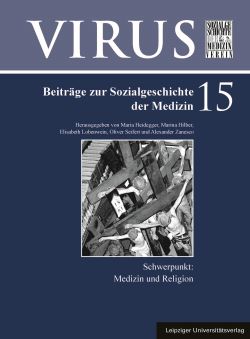
VIRUS Band 15, pp. 151-170, 2020/07/22
Schwerpunkt: Medizin und Religion

Museums of medical history collect and protect objects that are no longer used in medical surgeries, clinics and University Hospitals. However, in the medical history collection of the University of Zurich there are many objects with no connection to medical diagnosis andtherapeutics or to medical care. These artefacts (Ex Votos, amulets or souvenirs of places of pilgrimage) represent medical practices that are commonly assigned to the spheres of theirrational or to the religious and magical believes. Using the Zurich collection as example this paper is to show how such goods become part of a museum collection. Based on sources from the era between 1915 and 1925 I will explain which contemporary debates about religion and medical cures influenced the practitioner, collector and first curator of the Zurich collection, Gustav Adolf Wehrli (1888–1949), and his choice of relevant objects for his collection, and will outline which objects he left unconsidered.
Keywords: Medical museums, medical history collections, religious and magical cures, traditional medical systems, Gustav A. Wehrli, Switzerland, late 19th–early 20th centuries